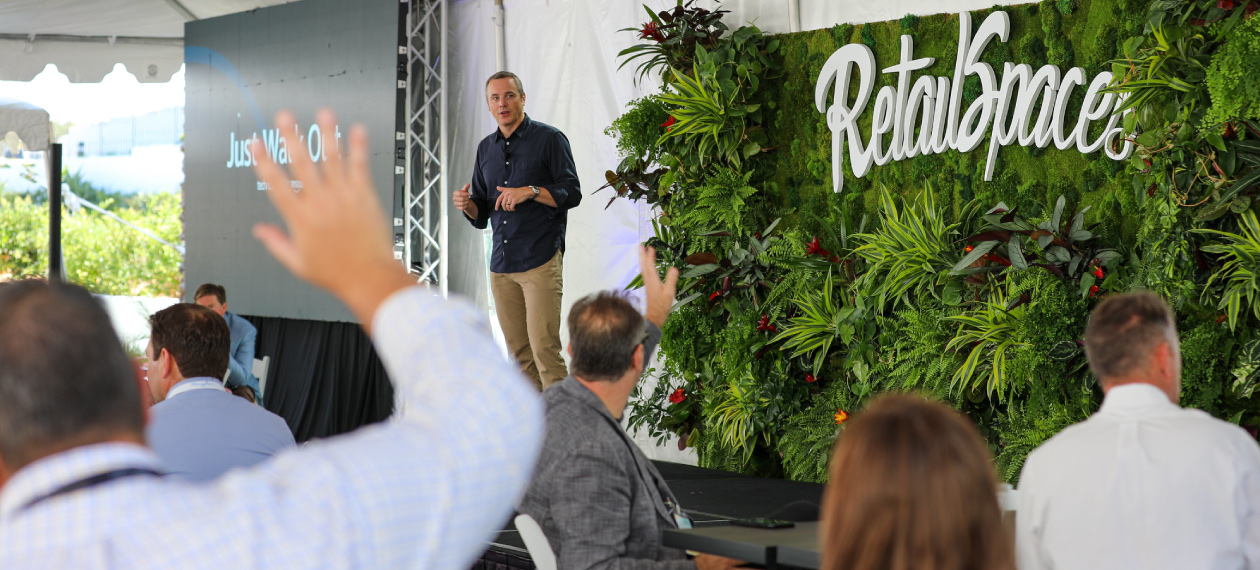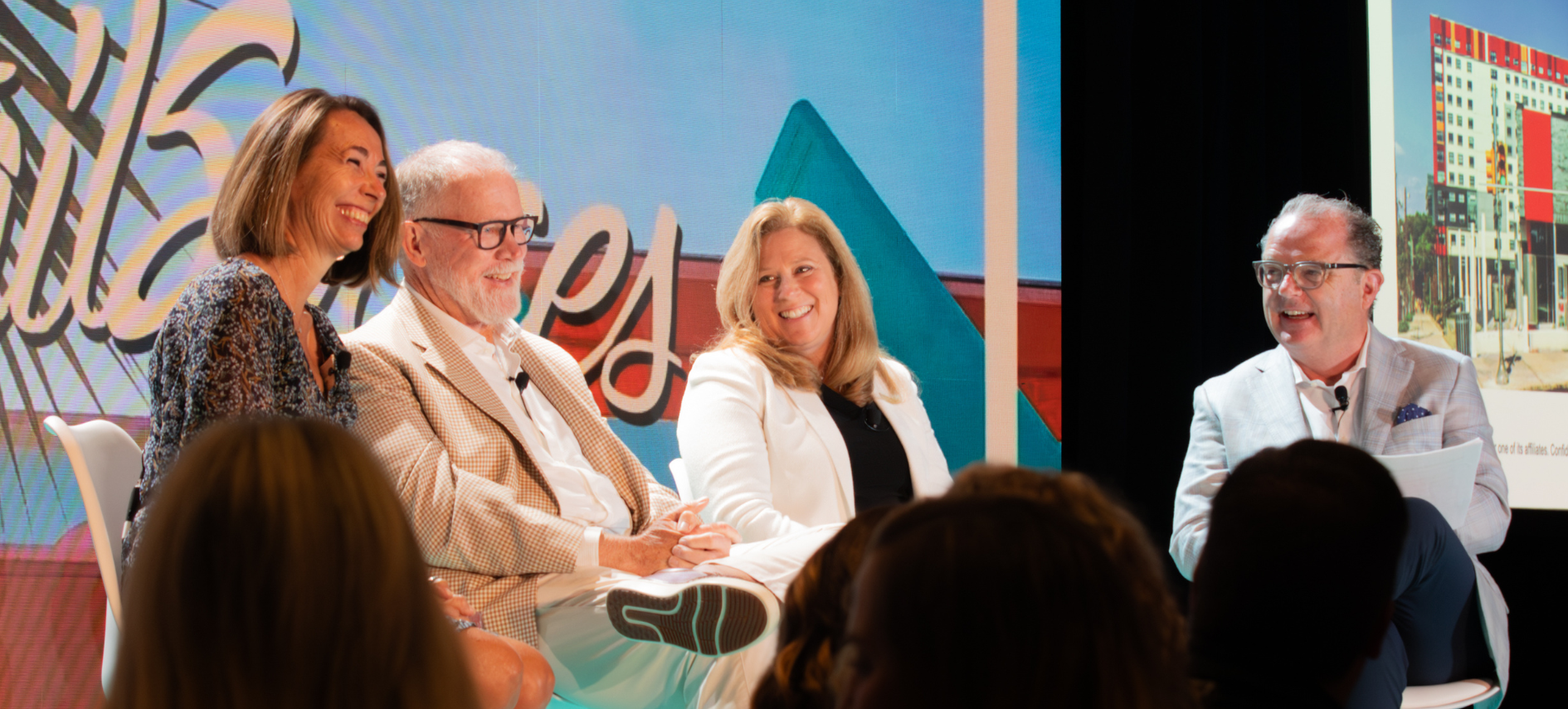In 2020 Amazon opened its first-ever grocery store, Amazon Fresh in Los Angeles, complete with “Ask Alexa” help stations and Dash Carts that detect each item placed in them. This year the retailer took things to a new level entirely, opening a 25,000-square-foot Amazon Fresh location equipped with its “Just Walk Out” cashierless checkout system. The pioneering technology, previously only used in smaller Amazon Go convenience stores, offers a compelling vision of retail’s future: guided by artificial intelligence, seamlessly blending high-tech solutions and human customer service, full of satisfied shoppers and happy employees.
And just like your Amazon Fresh delivery order, that future is coming faster than you might think.
“It’s super comfortable to live in the now, but living in the future is our job when we’re trying to think about how we bring innovation to our customers,” said Cameron Janes, Amazon’s VP, Physical Retail. It’s this mindset that led Amazon to develop Just Walk Out technology that completely eliminates one of the biggest pain points for retail customers: the checkout line. Using an array of cameras, sensors, and even biometric scanners, Just Walk Out allows customers to take whatever they want and just… Well, you get it.
Just Walk Out has the potential to completely transform the physical retail space, and Janes acknowledged that it can be daunting for other retailers to adopt something so disruptive. But for the customer, it’s a genie you can’t exactly put back in the bottle. As he explained at a recent RetailSpaces event, Amazon’s investment in physical retail is a way of experimenting and iterating on those genies before bringing them to the rest of the world — which is what it’s finally doing with Just Walk Out.
“We’re Just Starting to Get Rolling”
One of Just Walk Out’s earliest adopters is the travel retailer Hudson, which opened its first Hudson Nonstop location at Dallas Love Field airport. Another is Red Rocks Amphitheater, the 9,500-seat concert venue outside Denver. “We’re just starting to get rolling with this technology,” Janes said.
At its core, Just Walk Out is a complex system designed to answer a simple question: who took what? It uses cameras on the ceiling, sensors on shelves, computer vision, and machine learning to ensure customers a frictionless experience as they move through and out of the store.
In most locations, you’ll scan or tap a credit card when you enter, creating a “virtual cart.” Some locations use physical Amazon Dash carts, which allow the customer to “check in” using a QR code that connects the device to their Amazon account. Others offer Amazon One, a secure biometric recognition technology that cuts the phone out of the equation too — customers pay simply by waving their palm over a scanner.
“We’re really focused on, what did you take off the shelf? What did you put back?” Janes said. “When you walk out the gate, we know exactly what you took and we know how to charge you. All these technologies enable that.”
But that’s not all they enable. As Janes explained, Just Walk Out provides a veritable ocean of customer analytics, with the network of cameras and sensors in each store offering deep insights into shoppers’ behavior. This data can be used to refine merchandising, planograms, and other efficiencies with unprecedented granularity. “We know where customers are shopping, where they're not, what they're trying, what they're considering, what they're putting back,” he stressed.
One of many possibilities unlocked by the tech: comparing customers’ in-store behavior with their online behavior. If they take a free sample and don’t buy the product, for instance, you can see if they later buy it on Amazon.com. “You'll actually know if someone took a sample product, and then you can tie it to their behavior after the fact,” Janes said.
Working Around the Customer
Like any new, disruptive technology, Just Walk Out still has its share of challenges to overcome. Amazon’s philosophy is that its tech shouldn’t require customers to change the way they behave; instead, it should work around them. This means everyday actions — like picking loose potatoes out of a bin — can pose massive technological hurdles. “Who took what all of a sudden becomes immensely more difficult, because you're shopping and I'm shopping at the same time from the same area,” Janes said. “So just solving that simple behavior is really hard.”
Janes said Just Walk Out’s retail partners think about the technology in one of two ways. “They think, ‘How can I take some of my existing store models and layer this capability, this experience on top of them?’ Others take it another step, and they say, ‘How could I completely rethink my customer experience utilizing this technology?”
Early adopters attest to Just Walk Out’s radical potential. “The response has been incredibly positive,” said Hudson Group SVP Evan Schut in a video Janes shared about Hudson Nonstop. “This technology has changed our employee experience. We have turned our cashiers into customer service associates — they are now there to engage the customers, to help them with their shopping experience. And really it's more of an interactive process.”
Always Evolving
In addition to Hudson Nonstop and Red Rocks Amphitheater, Amazon is planning to bring Just Walk Out to Whole Foods locations in Washington, DC, and Sherman Oaks, California next year. The company is reportedly planning to open a department store as well, though Janes declined to comment on “rumors” — other than to stress that all Amazon’s brick-and-mortar offerings are, at heart, living laboratories.
“Our physical stores are no different from how we test on our website,” he said. “Some things are gonna work, we're gonna iterate, and then we're gonna grow from there. Even the stores you see today have evolved, and are evolving in front of your eyes.”

Posted by
Physical Retail Reimagined.
RetailSpaces is a community for store development and design innovators.
March 29-31, 2026 | San Antonio, TX
Learn More!








Comments